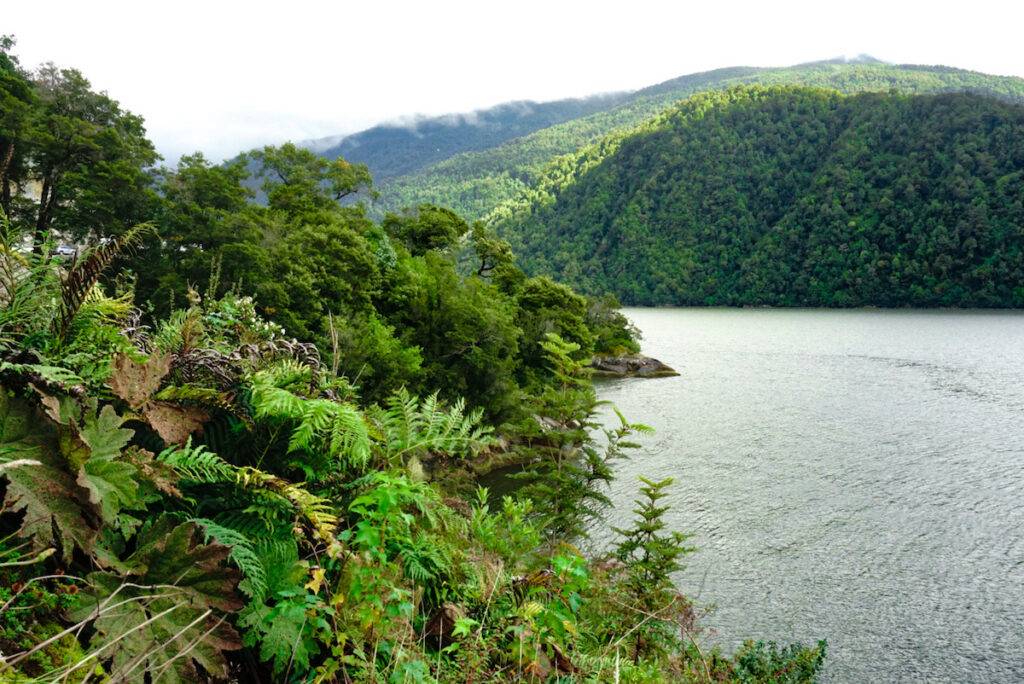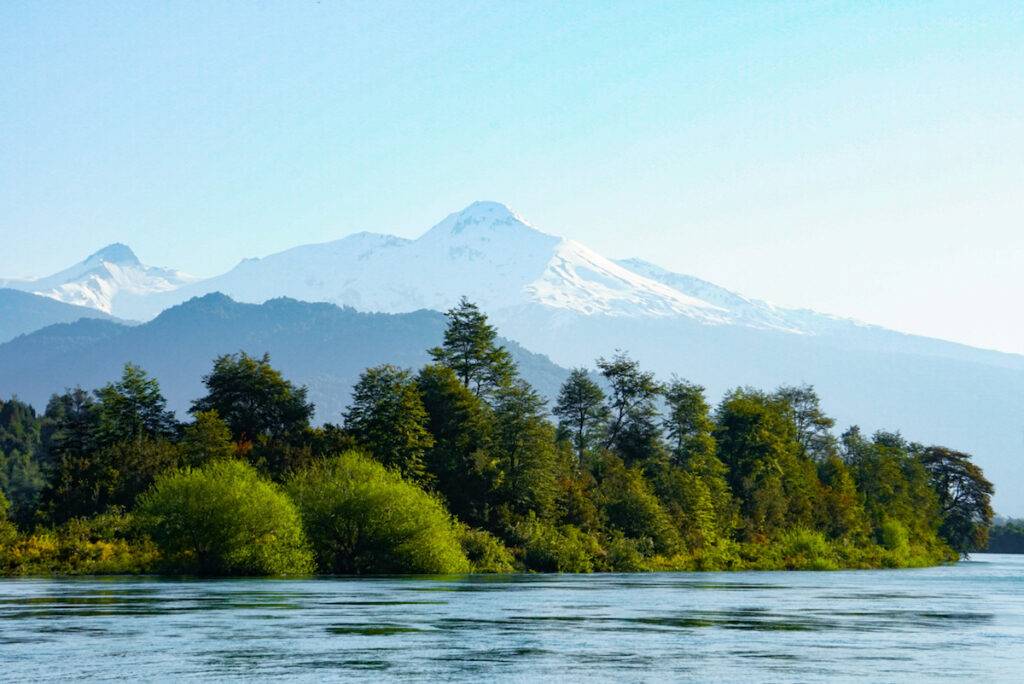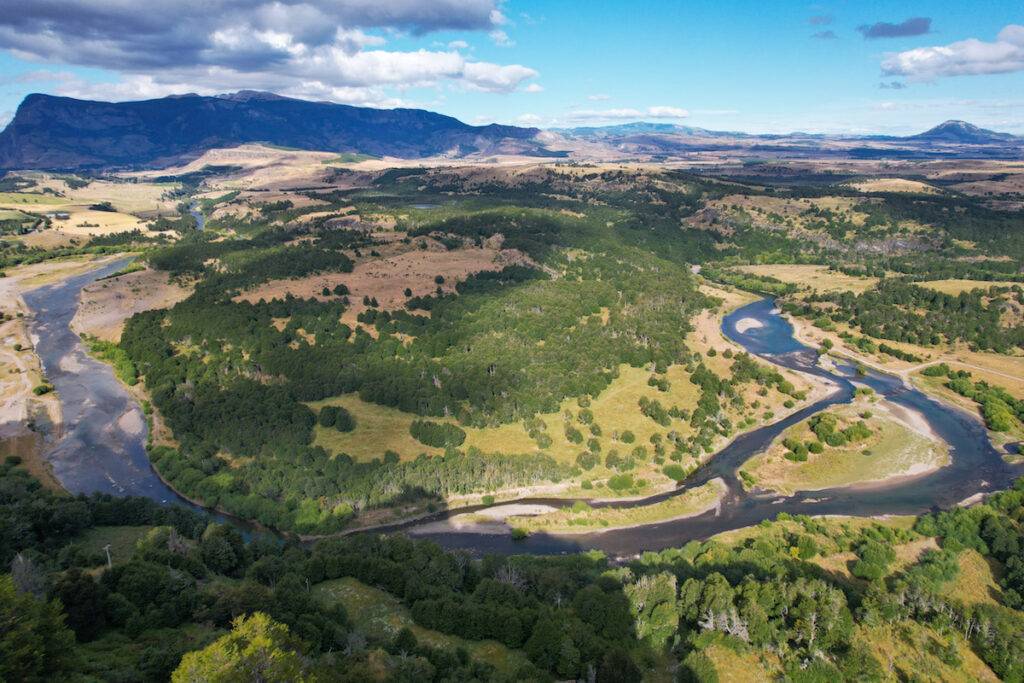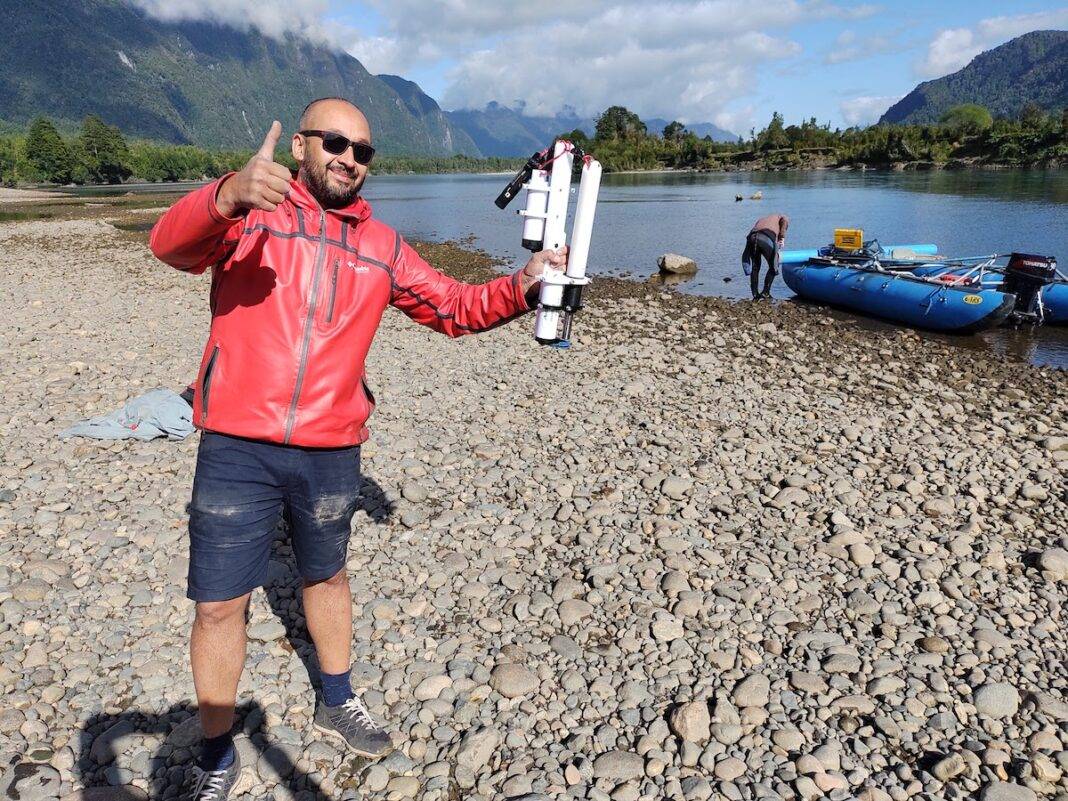Communities along pristine rivers in Chile, beginning to see the impacts of climate change, learn how to keep their waterways healthy.
In high school history class, we learned that the most sophisticated ancient civilizations developed on the banks of major riparian systems — the Nile, the Tigris and Euphrates, and the Indus rivers. There is a reason why these early communities flourished. Freshwater rivers provided easy access to drinking and irrigation water, an energy source, a trade route, and a spiritual custom site. While we’ve come a long way since then, our societies still rely on river systems, including Chilean society, which is heavily reliant on the rivers that lattice its lengthy landmass. These waterways attract tourism and provide recreation and clean drinking water. However, while many river systems around the world are polluted, those in Chile remain pristine and unobstructed by dams. Many flow through fjords originating from glaciers in the east that deposit their sediments — or glacial flour — into the water, dyeing it a dazzling electric blue. It can be hard to imagine that places exist where we can kneel on a riverbed, dip in a straw, and safely drink water straight from the source. And yet, in Chilean Patagonia, they persist.

Dozens of fish species, large and small, make their homes in Chile’s rivers. Rainbow trout and coho salmon swim, shaded by stands of gnarled coihue trees. For centuries, riparian regions have been thoughtfully stewarded by native peoples, such as the Mapuche, who have made Chilean Patagonia their home since time immemorial. But growing development in recent years is threatening the delicate balance of these managed places. Sales of land along waterways are booming, as is construction — mostly private residences for middle and higher income workers. If this rate of residential and industrial development continues, Chile's rivers will suffer. Which is where researchers from Patagonian Ecosystems Investigation Research Center (CIEP) come in, to work with communities on the ground to track and preserve water quality.
The motivation for their project lies in its nickname — Sequía or, in English, “drought.” The climate map of Chile looks like a French fry dipped in pebre sauce (an herby Chilean condiment): The top of the country is dry and yellow desert; the bottom, damp and green with forest. The intensifying climate crisis has resulted in an increase in average temperature, a decrease in rainfall, and encroaching desertification near major cities like Santiago. Put another way: the pebre is starting to drip off of the fry.
For centuries, riparian regions have been thoughtfully stewarded by native peoples, such as the Mapuche, who have made Chilean Patagonia their home since time immemorial. But growing development in recent years is threatening the delicate balance of these managed places.
In Chile, families typically stick to their locality with generation after generation growing up in the same community. But now, thanks to drought and the specter of further economic damage, families are uprooting and fleeing south to new housing developments — just one of many examples of climate-driven migration. The Sequía research project, which kicked off last year with funding from the Chilean government, comes at a pivotal moment.

When President Gabriel Boric took office one year ago, progressives across the country rejoiced. They saw him as the leader who could usher in a new era. A year hence, with a failed constitutional reform campaign and little notable change, Chileans are becoming disillusioned yet again. They’re ready to take matters into their own hands.
The Power of a Bucket
The Sequía Project aims to demonstrate both the value and vulnerability of these river ecosystems to the Chilean government to encourage conservation protections under federal law. Unlike the environmental regulations in the U.S. — the National Environmental Policy Act and Clean Water Act, to name just a few — regulations directly protecting waterways in Chile do not currently exist. “There are many established National Parks, but these conveniently dodge major river systems,” said Sage Fox, a researcher on the CIEP team. This lack of protections leaves waterways vulnerable to harm by timber companies, who could, with few obstacles, log forests of riverside lenga beech trees, eroding soil and muddying formerly clear rivers.
CIEP’s focus is primarily on five major river systems — the Aysen, Cisnes, Yelcho, Palena, and Puelo — that carve out much of southern Patagonia. The team decided to collaborate with locals to collect crucial data on the water, such as its heavy metal content, turbidity, nitrogen levels, and temperature.
The Sequía Project aims to demonstrate both the value and vulnerability of these river ecosystems to the Chilean government to encourage conservation protections under federal law. Unlike the environmental regulations in the U.S., regulations directly protecting waterways in Chile do not currently exist.
The researchers recruited community members at various river sites to collect water samples on a weekly basis, scooping a bucketful of water out of the river, then pouring that water sample into four different vials — two filtered through a microfiber cloth.
Volunteers store these water samples in their home refrigerators next to jars of mayonnaise and cartons of milk until the researchers come to collect them on their monthly visits to each location. The researchers then transport coolers of samples to their laboratory in Coyhaique, Chile, and update their database with each new addition.

One frequent obstacle in studies reliant on citizen-science is their unreliability — a problem particularly in a country often in a state of political and economic tumult. But key to this project’s success is its mutual benefit model. Each time the CIEP team visits a town to pick up another set of data samples, they educate the community on how the findings can impact their daily lives. Kindergarteners get answers to questions like ¿Cómo afecta la contaminación a mi pez favorito? (“How might pollution harm my favorite fish?”). Older students learn about the water cycle via crinkled wax paper and tinfoil models creating mini mountain dioramas. Their parents, many of whom work in the fishing industry, learn how climate change will impact their livelihoods.
Because of their isolated location, the residents of Chaitén often don’t get to interact with the greater scientific world. “It makes them feel proud of our hometown,” said María Eugenia, a biology and chemistry teacher. “I hope that we can communicate the results [with the larger community] and, additionally, that this inspires at least some of the students to pursue careers in environmental science.”
After teaching a class of high school seniors, researcher Lydia Blanchet told me via a Whatsapp phone call that it was another successful presentation. She was in the village of Chaitén, population 5,050, in southern coastal Patagonia, instructing this new group of students on how to filter water samples for use in the project. “They thought it was cool,” Blanchet said. Her previous group had just graduated high school, and training new students is critical to CIEP’s and the students’ long-term success. “They want to help protect the place they’re living in,” Blanchet said. “This is a tangible action that will have a direct impact. It’s really powerful.”
María Eugenia, the students’ biology and chemistry teacher, shared her motivation: “I got involved with this project because it was a great opportunity to familiarize my students with their home environment and also teach them how to take care of it.”*
Because of their isolated location, the residents of Chaitén often don’t get to interact with the greater scientific world. “It makes them feel proud of our hometown,” Eugenia said. “I hope that we can communicate the results [with the larger community] and, additionally, that this inspires at least some of the students to pursue careers in environmental science.”
CIEP’S Sage Fox was firm in his faith in the power of the Sequ֝ia project. “The loss of these natural gems [rivers] would be bad for all of us. Not just the Chilean people,” Fox said. “These data points have the potential to sustain global ecological stability. By demonstrating the specific vulnerability of these watersheds to climate change for government officials, we can better protect them.”
*Quote has been translated from Chilean Spanish.
What You Can Do: To support this project, donate to one of the sponsoring organizations. Similar ecosystems are under threat in the United States, such as Alaska’s Willow Drilling Project, or the Flat Country Timber Sale. Contact your local representatives to express your opposition, or get involved with your local environmental organization chapter.



